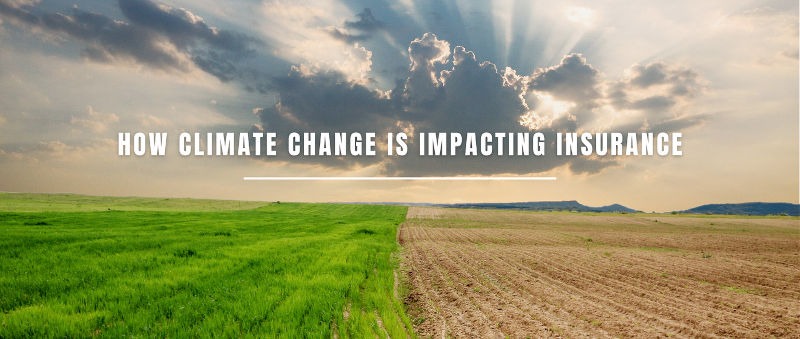
Richard Butler | Exclusive Report by ARUP KUMAR CHATTERJEE of ASIAN DEVELOPMENT BLOG | 27TH JUNE, 2023
The insurance sector can be a game-changer by managing risks from climate change in Asia and the Pacific, protecting ecosystems, and supporting the shift towards a sustainable future.
Climate change is the defining challenge of our time. Asia and the Pacific produces about half of global greenhouse gas emissions. If no action on climate change is taken, the region’s current GDP may shrink by 26.5 percent by 2048, says Swiss Re’s Climate Economics Index.
Our region also has an enormous catastrophe protection gap — the difference between optimal and actual insurance coverage. It averages 92% compared to the world average of 58%, burdening public budgets, businesses, and households.
Climate risk manifests in two ways. First, physical risks can damage properties and disrupt supply chains to cause enormous losses to economies, exacerbated by a lack of climate risk mitigation infrastructure and other capacities. Second, the overall shift in policy, technology, and market sentiment raises costs, reduces incomes, and strands assets amid transition requirements to a low carbon economy.

Both physical and transition risks impair asset values and credit quality of loans and investments from banks, financial institutions, insurers, and capital markets. In the absence of appropriate countercyclical financing mechanisms like income-smoothing social safety nets and public insurance schemes, this can create sizeable implicit contingent liabilities for governments.
Yet, governments have been slow to integrate climate risk and its threat to financial systems into their decision-making and strategies.
As society’s risk managers, insurers have a critical role in the web of climate change complexities, providing financial stability in the process. The industry is uniquely qualified to assess and price risk through differential premiums and setting deductibles. Price signaling can incentivize policyholders to reduce risk and limit the impacts of extreme weather. For example, homeowners might fortify their roofs to typhoons and thus pay a lower premium or face a lower deductible.
According to the International Energy Association’s projections, solar, wind, hydro, biomass, and the like will provide 49% of global electricity generation by 2050. Yet, the risks keep growing. Insurance offers coverage opportunities for the entire life cycle of renewable energy projects. Providing underperformance guarantee insurance coverage can make renewable energy projects more bankable.
Inclusive insurance can hasten recovery and boost resilience by providing financial compensation or shock-responsive social protection. For example, vulnerable women working in extreme heat can receive payouts when temperatures hit a pre-determined level over a pre-defined period. The insurance policy can pay out multiple times to compensate for missed work during those heat waves and warm spells.

In the agriculture sector, insurance against multiple risks can contribute to the overall cost-effectiveness of crop insurance schemes against climate-related risks. These plans could include insurance for crop loss, discounting premiums for farmers who invest in climate-resilient measures, and starting shared insurance funds or government-backed insurance.
The insurance industry is likewise moving to protect endangered “blue” natural resources. On coasts, mangroves and coral reefs can cost-effectively reduce flooding. The industry is starting to use innovative risk transfer schemes to conserve and restore natural ecosystems, including the Hindukush Himalayas.
We must nonetheless bear in mind that climate-related risks pose an imminent threat to the sustainability of insurance operations. The insurance sector in emerging markets faces significant headwinds in accessing capital and data. Taxonomy, regulations, standards, and best practices remain nascent, weakly defined, and unharmonized. These factors affect the insurability of policyholders’ assets and incomes and insurers’ operations and investments.
By actively pursuing financial risk literacy, the insurance industry can prepare the foundation to help society reduce residual risks and narrow the protection gap.
Increased natural catastrophe exposure can lead to greater risk capital requirements or reduced reinsurance capacity for non-life insurers, or even higher premiums. This could be in the form of loadings for anti-selection, and also additional margins for the absorption of catastrophe-related losses that are becoming more frequent and severe.
There may also be a risk of financial exclusion of certain natural catastrophe-prone vulnerable policyholders, as premiums become unaffordable or the cover is not within an insurer’s risk appetite. Balancing premium affordability and risk-reduction incentives is important.
For life insurers, climate change may change demographics or mortality and morbidity and in turn increase investment uncertainty. It may leave insurers unable to meet guaranteed returns and see greater accumulation of risk, resulting in mass loss of life inherent to increased natural catastrophe activity.

How do we build resilience and reduce the protection gap? An enabling environment for disaster risk financing and using a risk-layered approach for developing national disaster risk financing plans for the deployment of a wide array of financing instruments is needed.
Promoting public–private partnerships and pooling mechanisms can help provide affordable coverage by helping real economy actors to absorb shocks and protect their debt-service exposure against climate change-induced events. This will in turn reduce the default rates and maintain creditworthiness.
A much greater volume, velocity, and granularity of data sets using modeling techniques and approaches are needed to allow consumers and insurers to understand and price risks. Any successful response must involve a mix of compulsory and voluntary measures backed by a robust framework for assessment, implementation, and monitoring that leverages the latest technologies—big data, data analytics, automation, artificial intelligence, and machine learning.
Policy reforms are needed to help drive climate-sensitive public policies, investments in infrastructure projects resilient to climate change impacts, and risk management solutions that shift market incentives in line with low-carbon growth strategies. Environmental, social, and governance issues are gaining traction, with institutional investors exerting influence and channeling investments into projects that deliver measurable non-financial benefits while improving long-term financial returns.
Insurers need to shift business models away from transactional risk transfers and indemnity payments, and toward mitigating physical climate risks. These include rebates for using resilient construction materials, working with governments to improve land use planning and building standards and policies, and supporting a just transition from coal to clean energy.
We cannot solve our problems with the same thinking used when we created them. Climate action can improve lives, create jobs, build green cities, and protect ecosystems. By actively pursuing financial risk literacy the insurance industry can help society reduce residual risks and narrow the protection gap.





